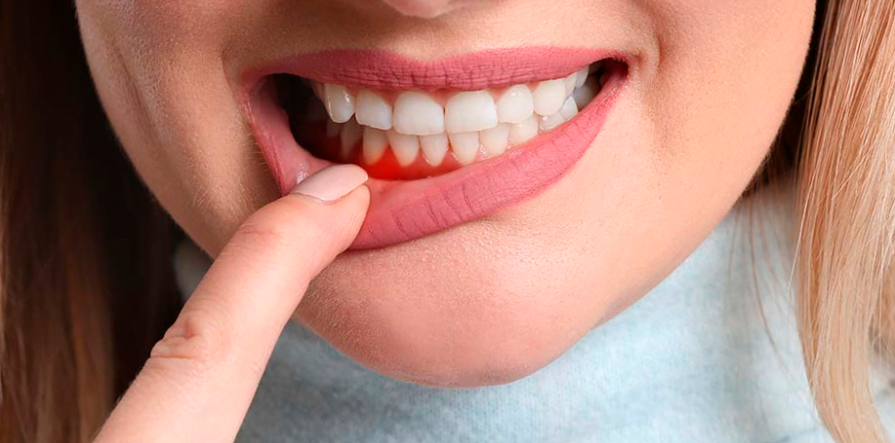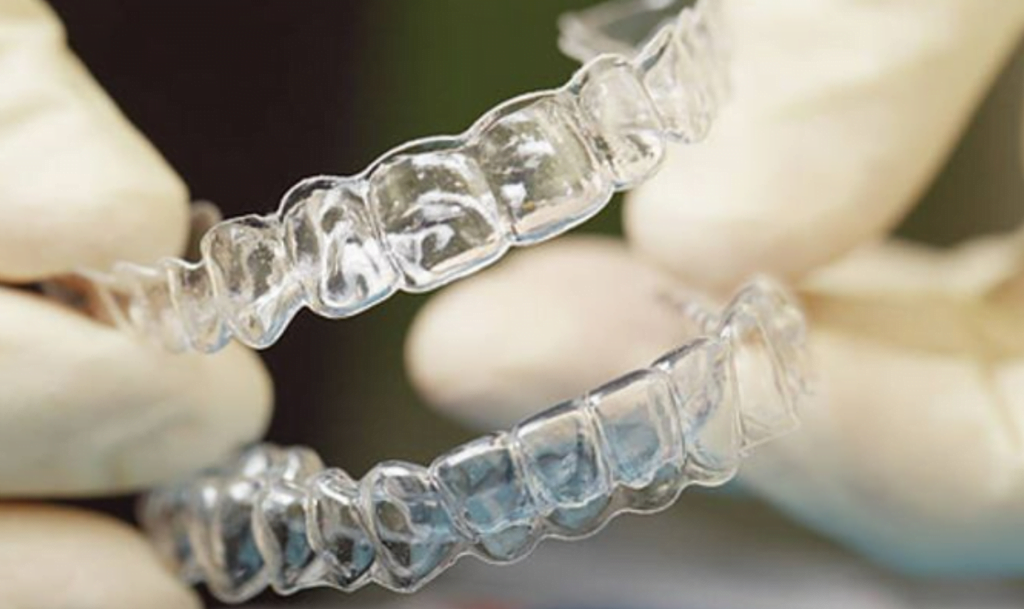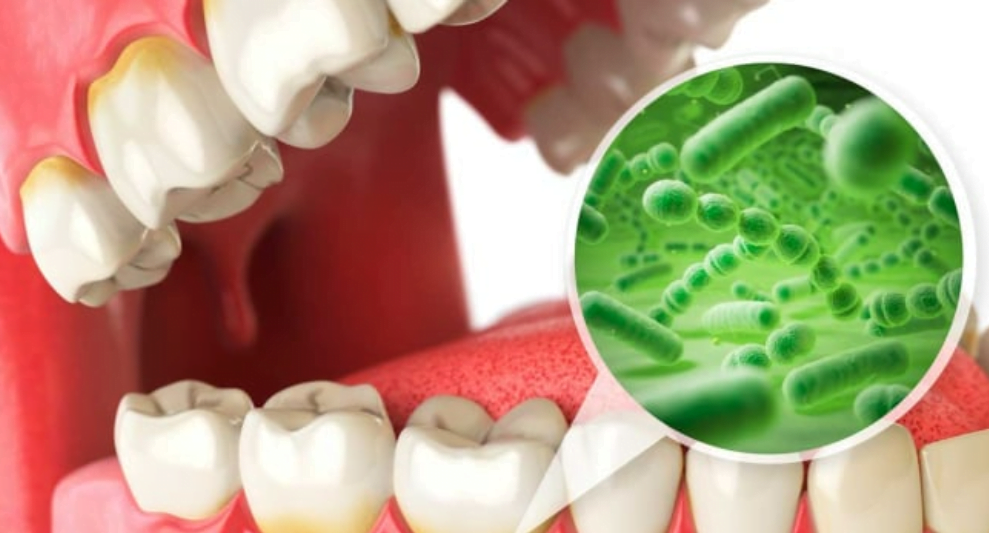Breakthrough Device for Early Detection of Gum Disease and Its Impact on Overall Health
In recent times, the field of dental health has witnessed a groundbreaking development that promises to revolutionize the way we detect and address gum diseases, such as gingivitis and periodontitis. A team of brilliant engineers at the University of Cincinnati has unveiled a cutting-edge device designed to alert consumers to the early risks of tooth decay stemming from these prevalent diseases. This device, a remarkable feat of scientific innovation, has the potential to not only transform dental care but also safeguard our overall health.
The Challenge of Identifying Disease-Causing Bacteria
Gingivitis, the earliest form of gum disease, is primarily caused by specific strains of bacteria. However, isolating the exact type responsible for this disease had long been a formidable challenge for researchers in the field. According to Andrew Steckl, an Ohio Eminent Scholar and distinguished research professor in UC’s College of Engineering and Applied Science, the journey to detect the toxin produced by the bacteria responsible for gingivitis had been arduous. But the persistence and ingenuity of this team ultimately paid off.
Collaborative Research: A Path to Success
The success story of this groundbreaking device involves a collaborative effort that brings together expertise from various fields. UC Senior Research Associate Daewoo Han and principal scientist Sancai Xie from Procter & Gamble Co. played pivotal roles in this endeavor. Their remarkable results have been documented in a paper published in the prestigious Royal Society of Chemistry journal “Sensors and Diagnostics.”
Saliva: The Key to Early Detection
One of the most fascinating aspects of this innovative breakthrough is the choice of saliva as the testing medium. As Steckl rightly pointed out, saliva offers several advantages for such diagnostic purposes. It is readily available and can be collected noninvasively. Moreover, saliva contains a wealth of vital elements that can serve as indicators of an individual’s overall health.
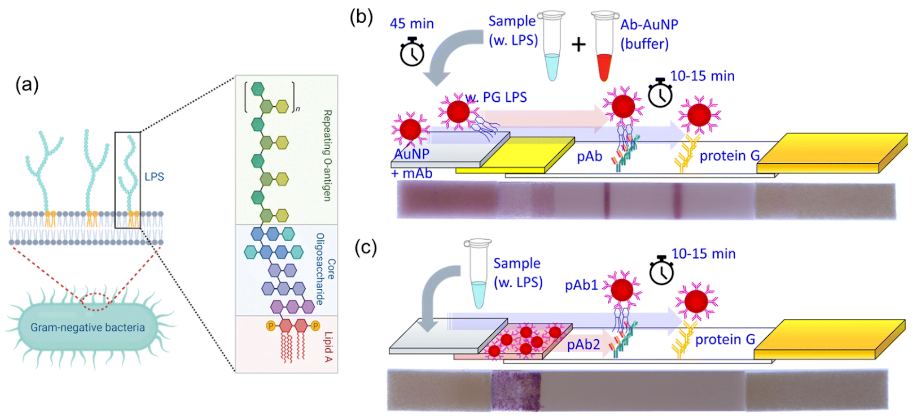
Basic mechanisms and assay designs for combined mono/polyclonal antibody-based lipopolysaccharides (LPS) detection and LFA implementation: (a) structure of LPS released from the Gram-negative bacteria (created with https://Biorender.com); (b) separate premixing of sample and Ab–AuNP solutions (photo taken after the test); (c) simplified approach using polyclonal Ab–AuNPs preloaded on the conjugate pad (photo taken before the test).
The Far-reaching Consequences of Gingivitis
Gingivitis is not merely a localized oral health concern. Bacteria from this condition can find their way into the bloodstream, potentially leading to more severe health problems, including cardiovascular diseases. Therefore, early detection and intervention are critical not only for preserving dental health but also for safeguarding one’s general well-being.
Overcoming the Challenges of Saliva Testing
While saliva is a promising biofluid for health monitoring, it poses its own set of challenges. Han, the lead author of the study, explained that saliva is a complex substance. To ensure accurate test results, the research team implemented a pretreatment process using potato starch to remove amylase, a protein that could potentially interfere with the testing. Their method relies on antibodies that react specifically to the endotoxins produced by the disease-causing bacteria.
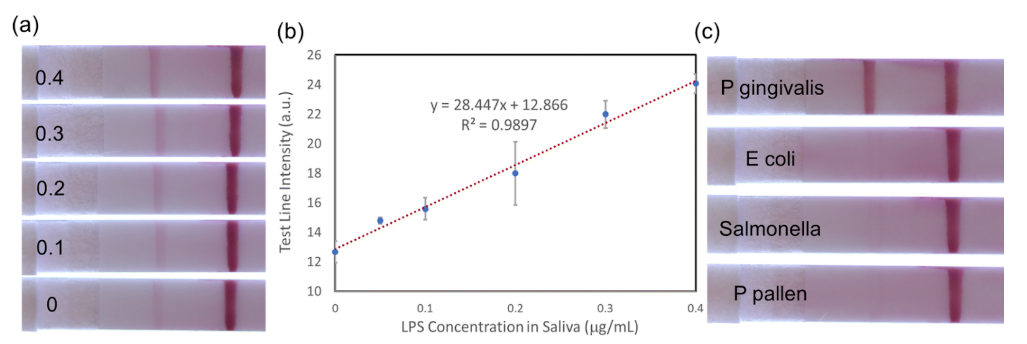
Treated saliva tests with several LPS concentrations: (a) LFA test images of different LPS concentration (μg mL−1) shown in each LFA strip; (b) quantitative analysis using ImageJ (n = 3); (c) selectivity evaluation against various endotoxins.
The Rise of At-Home Health Testing
In the wake of the COVID-19 pandemic, the concept of at-home health testing has gained immense popularity. Although such testing has existed in niche applications like pregnancy detection for generations, the pandemic introduced it to a wider audience. According to Allied Market Research, the at-home testing industry is projected to generate a staggering $45 billion annually by 2031.
Promising Results and Future Prospects
Andrew Steckl is optimistic about the potential applications of this groundbreaking device. He emphasizes that their results undeniably show promise, even though the journey was fraught with challenges. As with most scientific endeavors, success often requires relentless perseverance.
Conclusion
The development of this cutting-edge device for the early detection of gum disease marks a significant milestone in the field of dental health and general well-being. Its ability to identify the specific bacteria responsible for gingivitis, its use of saliva as a diagnostic medium, and its potential to prevent severe health complications make it a game-changer. As the world becomes increasingly aware of the importance of proactive health monitoring, innovations like this are poised to make a substantial impact. The journey to healthier smiles and healthier lives has taken a remarkable step forward thanks to the dedication and collaboration of these visionary researchers.
Sources
- Science Daily – New at-home test for gingivitis protects oral health September 7, 2023
Sensors & Diagnostics –Salivary endotoxin detection using combined mono/polyclonal antibody-based sandwich-type lateral flow immunoassay device August 21, 2023

